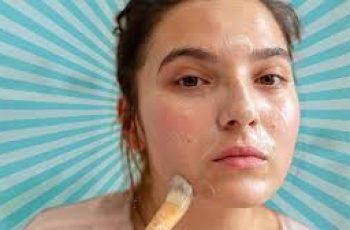
Penetration and Skin Absorption of Ingredients
Penetration and Skin Absorption of Cosmeceutical Ingredients
There are many factors that determine skin absorption of cosmetics, drugs, and chemicals through the skin. Ingredients must have dermal absorption to have significant long term effects on skin, especially to improve wrinkles and aging skin.
The speed of skin absorption depends on what ingredients are in the skin care product, strength of the skin barrier, humidity levels, and temperature of the skin.
One of the main difficulties in making skin care products effective is getting them to absorb into the skin. Ingredients that are called penetration enhancers are added to speed and increase skin absorption of serums, lotions, gels, oils and creams.
Can skin care products penetrate the skin?
Yes some skin care ingredients can absorb and penetrate into deeper skin layers but not all. Skin absorption and how fast they get into the skin depends on several factors:
polarity of the molecule
size
hydrophilic vs lipophilic
condition of skin barrier
temperature
skin hydration
thickness of stratum corneum
other products layered together
How do cosmetic ingredients absorb into the skin?
There are 3 main skin absorption routes that ingredients use to get into the skin:
Transcellular Route: This is a path where substances enter the skin by moving directly through the skin cells. They must travel through both hydrophilic (water-attracting) and hydrophobic (water-repelling) parts of the cells found in a layer of skin called the stratum corneum. This is the most common route of skin care absorption of cosmeceutical ingredients. Molecules must be of a molecular weight less than 500 Daltons to enter the skin this way. (4)
Intracellular or Paracellular Route: This path involves substances moving through the tiny spaces between skin cells, rather than directly through them.
Appendageal Route: This path is for hydrophilic (water-attracting) compounds and larger molecules that can enter the skin by going through hair follicles or sweat glands. This path can change depending on the location on the body because different areas have different numbers of hair follicles.
How long does it take skin care products to absorb into skin?
This is impossible to answer because there are so many variables. This needs to be answered on an ingredient, skin care products and skin care regimen level because there are so many factors that play a role.
Click here to see how long it takes for Vitamin C to absorb.
You can also look up individual ingredients here in the skin care ingredient library.
Or read about layering and how ingredients interact at this link.
You can learn about skin care regimen design here at this link.
When we build a custom skin care regimen for you- we take all of these factors into account so you do not need to wait between routine steps to apply the next product. Our regimens are designed to maximize skin absorption.
Take the quiz to find the best skin care regimen steps for your Baumann Skin Type.
Take the Quiz
Why is it hard to get skin care products to absorb into skin?
Scientists have studied how drugs pass through the skin and have shown that the outermost layer of skin, called the stratum corneum, is the main barrier to prevent substances from getting into the skin. How fast a skin care lotion, cream, or serum penetrates and moves through this layer determines how well it will be absorbed by the skin. (2)
Do creams get absorbed by the skin
Does skin absorb cream?
Creams contain many fatty acids which are naturally occurring in the skin. Due to their shape and structure, oils and cream tend to absorb well into the skin. Of course how fast and well it absorbs depends upon the type of moisturizer.
Some fatty acids absorb better than others.
How Skin Treatments Differ from Nasal Sprays and Eye Drops
I have seen patients try to use nasal drops such as Afrin or eye drops such as Visine to treat facial redness. However, treatment made to go in your eyes or nose are very different than topical treatments and are n usually not very effective when use don the skin.
This is why nasal sprays and eye drops do not absorb well into the skin:
Penetration enhancers are not typically found in nasal sprays or eye drops mainly because their roles and effects are different from what is desired in these formulations. Here’s why they are generally not used in such products:
Different absorption goals : Penetration enhancers are used to facilitate the absorption of active ingredients through the skin or mucous membranes by altering their permeability. In nasal sprays and eye drops, the primary goal is often to deliver the active ingredient to the surface tissues (nasal passages or eye surface), not to enhance its absorption through these tissues into the bloodstream or deeper tissues.
Sensitivity of mucosa and cornea : The nasal mucosa and the cornea are sensitive and can be easily irritated. Penetration enhancers often disrupt lipid layers or alter tissue structure to increase absorption, which can lead to irritation or damage in these sensitive areas. For instance, ingredients that disrupt the lipid barrier could cause drying, inflammation, or irritation to the delicate mucous membranes of the nasal passages or the cornea.
Risk of systemic absorption : Enhancing the penetration of active ingredients in areas like the nose or eyes could increase the risk of systemic absorption. This could lead to unintended systemic effects, especially if the active ingredient is potent and meant to act locally, not systemically.
Formulation stability and compatibility : Penetration enhancers may not be compatible with the formulation of nasal sprays or eye drops. They could affect the stability, solubility, or efficacy of the active ingredients, or they might interact negatively with other formulation components.
Specific formulation requirements : Nasal sprays and eye drops have specific formulation requirements to ensure they are isotonic, non-irritating, and stable. Penetration enhancers might interfere with these requirements, affecting the product’s safety and effectiveness.
While penetration enhancers are valuable in topical formulations for skin application, their use in nasal sprays and eye drops is limited due to the potential for irritation, the necessity for localized action rather than deep tissue penetration, and the delicate balance required in formulating products for the nasal passages and eyes.
How cosmetic and drug ingredients affect skin absorption and diffusion of skin care products
The skin care routine step order is critical when building a safe and effective skin care routine because the ingredients in the skin care routine, which ingredients are used together, and how products are layered affect how well all the products in the skin care regimen pass through the skin.
Different ways that ingredients can affect skin absorption include (5) :
Break down the structure of the outermost layer of skin called the stratum corneum
Damage the skin barrier
Interact with proteins in the skin
Use solvents to change the skin’s properties
Change connections between skin cells
Affect skin metabolism
Enter through the hair follicle
Some of these substances work by changing both the water-loving (hydrophilic) and oil-loving (hydrophobic) pathways for skin penetration, while others only affect one of these pathways.
The skin barrier is hydrophobic which means that oils can more easily pass through than water. This is why oils are often used as penetration enhancers. However, oils are also occlusives. So if oils are applied before an ingredient they can slow absorption, but when applied after an ingredient they can speed absorption. The type of oil and the fatty acids it contains are also huge factors in skin absorption speed and depth of penetration.
Factors affecting absorption through skin:
size
temperature
hydrophilic vs hydrophilic’
entry through heir follicle vs need to transverse the epidermis
polarity of the molecule
type of fatty acid present
How to speed up skin absorption?
Hydration, or the addition of water, can loosen the connections between cells in the stratum corneum (SC), allowing for increased penetration of substances and faster skin absorption.
Covering the skin with occlusive materials, natural oils like sebum, or patches specifically designed to block moisture can also enhance penetration. This is how skin slugging works.
Hyaluronic acid (HA) is renowned for increasing the skin absorption of drugs applied to the skin’s surface. This is most likely achieved by raising the hydration level in the outer skin layers, making it easier for the drug to stay within the moistened epidermal layers.
Fatty acids commonly found in cleansing and moisturizing products, can affect the movement and arrangement of stratum corneum (SC) lipids- allowing holes to form in the barrier which increases penetration and affects skin absorption. Unsaturated fatty acids such as oleic, linoleic, and palmitoleic acid are more effective at increasing skin penetration than saturated ones like palmitic and stearic acid. Oleic acid, a primary fatty acid in olive oil, is particularly popular for enhancing drug delivery, as it interacts well with the extracellular lipids in the SC.
Temperature also plays a role. Ingredients will absorb better on warm skin. Keeping your skin care in the refrigerator can decrease how fast they absorb unless you allow them to come to room temperature before applying them.
The effectiveness of all cosmeceutical products depends on their exposure to these factors and the timing of that exposure within the skincare regimen. It’s essential to note that the side effect profile of particular ingredients, such as benzoyl peroxide and retinoids, can be significantly affected by the presence of HA and fatty acids in cleansers and moisturizers.
Which oil penetrates the deepest?
How deep oils penetrate into the skin is determined by how fast they absorb thought the skin barrier. The type, structure and amount of fatty acids in the oil and the strength of the skin barrier determine absorption speed. The structure of oleic acid, the predominant fatty acid in olive oil, causes tiny holes in the skin barrier which help speed absorption. This is why olive oil penetrates deeper and faster into the skin the most oils. However, it is not a very hydrating oil because the holes it leaves behind allow water to evaporate off of the skin in a process called transepidermal water loss.
Olive oil penetrates the skin best, but coconut oil, almond oil, and tea tree may be better choices depending upon your skin type.
Do essential oils get absorbed by the skin
Absorption of essential oils
Many essential oils are mixed with ethanol, menthol, or other types of alcohol which can increase skin absorption.
These essential oils increase the skin absorption of other ingredients:
Anise
Bisabolol (found in chamomile)
Cardamon
Eucalyptus
Niaouli
Peppermint
Sweet Basil
Ylang-ylang
Eucalyptus, tea tree and peppermint oil can damage the skin (5) leading to an increase risk of skin allergy or irritation.
Is increasing skin absorption of skin care ingredients safe?
Increased skin absorption of chemicals ingredients in skin care is not always a desirable outcome. For example, in the case of chemical sunscreens, fragrances, and preservatives, we want to avoid toxicity and limit penetration of these ingredients. (3)
Increasing skin absorption of acne medications like benzoyl peroxide and tretinoin can increase side effects.
This is not a concern with clean skin care ingredients because they are nontoxic.
There are many ingredients such as Vitamin C that you want to increase skin absorption so that the products work better. It all depends on the type of ingredient.
It is important when designing a skin care routine for your skin type that you take into account skin absorption of every ingredient in your routine.
Enhancing skin absorption is only one thing to consider when choosing skin care products to use.
Let us help!
Take the quiz and we will design a regimen for you.
Take the Quiz
Skin Absorption of Unsaturated vs Saturated Fatty Acids
The speed of skin absorption of face creams and body creams depends upon the types of fatty acids and oils in the skin care product.
Skin Absorption of Unsaturated Fatty Acids
Unsaturated fatty acids absorb faster into the skin. These fatty acids typically have one or more double bonds in their structure, leading to increased skin absorption.
Examples of Unsaturated Fatty Acids:
Oleic acid
Linoleic acid
Palmitoleic acid
Alpha-linolenic acid
Gamma-linolenic acid
Many oils are rich in these unsaturated fatty acids, contributing to their benefits in skin care.
Oils with a Predominance of Unsaturated Fatty Acids:
Olive oil (high in oleic acid)
Sunflower oil (high in linoleic acid)
Safflower oil (high in linoleic acid)
Grapeseed oil (high in linoleic acid)
Flaxseed oil (high in alpha-linolenic acid)
These oils are often used in various skin care products for their hydrating and nourishing effects, attributed to their content of unsaturated fatty acids.
Skin Absorption of Saturated fatty Acids
Saturated fatty acids do not penetrate the skin as quickly as unsaturated fatty acids. This slows skin absorption because saturated fatty acids have no double bonds in their structure, resulting in straight, tightly packed tails. The shape of the tails and the polarity of the molecules make them less fluid, so they do not absorb into the skin as readily.
Examples of Saturated Fatty Acids:
Palmitic acid
Stearic acid
Myristic acid
Lauric acid
Caprylic acid
Oils that contain a high proportion of these saturated fatty acids include:
Oils with a Predominance of Saturated Fatty Acids:
Coconut oil (high in lauric acid)
Palm oil (high in palmitic acid)
Cocoa butter (high in stearic acid)
Shea butter (high in stearic acid)
These saturated fatty acids and oils containing them are often used in skin care for their emollient properties, but they are not as readily absorbed into the skin due to the structural characteristics mentioned above.
You can see that many issues affect the speed of skin absorption of skin care products.
Peptides and growth factors are examples of large molecules that have trouble penetrating into the skin.
Your entire regimen needs to be designed to increase skin absorption of hard to absorb ingredients to help them enter into the skin and penetrate into deeper layers.
Let us help you design your skin care routine to increase skin absorption and efficacy of your skin care products. All you have to do is take the quiz.


